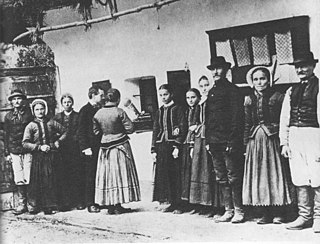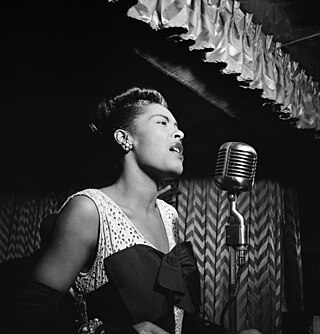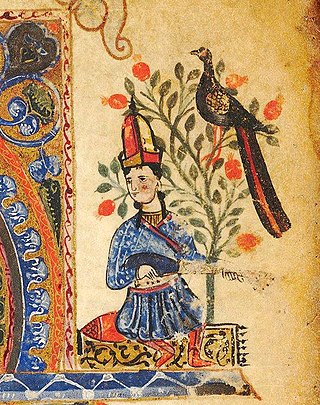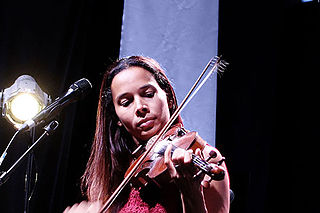
Folk music is a music genre that includes traditional folk music and the contemporary genre that evolved from the former during the 20th-century folk revival. Some types of folk music may be called world music. Traditional folk music has been defined in several ways: as music transmitted orally, music with unknown composers, music that is played on traditional instruments, music about cultural or national identity, music that changes between generations, music associated with a people's folklore, or music performed by custom over a long period of time. It has been contrasted with commercial and classical styles. The term originated in the 19th century, but folk music extends beyond that.

A song is a musical composition intended to be performed by the human voice. This is often done at distinct and fixed pitches (melodies) using patterns of sound and silence. Songs contain various forms, such as those including the repetition and variation of sections.

Much has been learned about early music in Norway from physical artifacts found during archaeological digs. These include instruments such as the lur. Viking and medieval sagas also describe musical activity, as do the accounts of priests and pilgrims from all over Europe coming to visit St Olaf's grave in Trondheim.

Throughout the history of the British Isles, the United Kingdom has been a major music producer, drawing inspiration from Church Music.
Hungary has made many contributions to the fields of folk, popular and classical music. Hungarian folk music is a prominent part of the national identity and continues to play a major part in Hungarian music. It is also strong in the Szabolcs-Szatmár area and in the southwest part of Transdanubia. The Busójárás carnival in Mohács is a major Hungarian folk music event, formerly featuring the long-established and well-regarded Bogyiszló orchestra.
Romania is a European country with a multicultural music environment which includes active ethnic music scenes. Traditional Romanian folk music remains popular, and some folk musicians have come to national fame.

Music has been an integral part of Egyptian culture since antiquity in Egypt. Egyptian music had a significant impact on the development of ancient Greek music, and via the Greeks it was important to early European music well into the Middle Ages. Due to the thousands of years long dominance of Egypt over its neighbors, Egyptian culture, including music and musical instruments, was very influential in the surrounding regions; for instance, the instruments claimed in the Bible to have been played by the ancient Hebrews are all Egyptian instruments as established by Egyptian archaeology. Egyptian modern music is considered as a main core of Middle Eastern and Oriental music as it has a huge influence on the region due to the popularity and huge influence of Egyptian cinema and music industries, owing to the political influence Egypt has on its neighboring countries, as well as Egypt producing the most accomplished musicians and composers in the region, specially in the 20th century, a lot of them are of international stature. The tonal structure music in the East is defined by the maqamat, loosely similar to the Western modes, while the rhythm in the East is governed by the iqa'at, standard rhythmic modes formed by combinations of accented and unaccented beats and rests.
Ukrainian music covers diverse and multiple component elements of the music that is found in the Western and Eastern musical civilization. It also has a very strong indigenous Slavic and Christian uniqueness whose elements were used among the areas that surround modern Ukraine.
Music of Kazakhstan refers to a wide range of musical styles and genres deriving from Kazakhstan. Kazakhstan is home to the Kazakh State Kurmangazy Orchestra of Folk Instruments, the Kazakh State Philharmonic Orchestra, the Kazakh National Opera and the Kazakh State Chamber Orchestra. The folk instrument orchestra was named after Kurmangazy Sagyrbayuly, a well-known composer and dombra player from the 19th century.
The Music of Pakistan includes diverse elements ranging from music from various parts of South Asia as well as Central Asian, Middle Eastern, and modern-day Western popular music influences. With these multiple influences, a distinctive Pakistani music has emerged.
Traditional Latvian music is often set to traditional poetry called dainas, featuring pre-Christian themes and legends, drone vocal styles and Baltic psaltery.

The music of Armenia has its origins in the Armenian highlands, dating back to the 3rd millennium BCE, and is a long-standing musical tradition that encompasses diverse secular and religious, or sacred, music. Folk music was notably collected and transcribed by Komitas Vardapet, a prominent composer and musicologist, in the late nineteenth and early twentieth centuries, who is also considered the founder of the modern Armenian national school of music. Armenian music has been presented internationally by numerous artists, such as composers Aram Khachaturian, Alexander Arutiunian, Arno Babajanian, Haig Gudenian, and Karen Kavaleryan as well as by traditional performers such as duduk player Djivan Gasparyan.
The Scots Trad Music Awards or Na Trads were founded in 2003 by Simon Thoumire to celebrate Scotland's traditional music in all its forms and create a high profile opportunity to bring the music and music industry into the spotlight of media and public attention. Nominations are made by the public and in 2019 over 100,000 public votes were expected across 18 categories.

Ilaiyaraaja is an Indian musician, composer, arranger, conductor, orchestrator, multi-instrumentalist, lyricist and singer, popular for his works in Indian cinema, prominently in Tamil and Telugu films. Reputed to be one of the most prolific composers in a career spanning over forty-seven years, he has composed over 7,000 songs and provided film scores for over 1,000 films, apart from performing in over 20,000 concerts. He is nicknamed "Isaignani" and often referred to as "Maestro", the title conferred by the Royal Philharmonic Orchestra, London.
This topic covers notable events and articles related to 2010 in music.

Tale Ognenovski was a Macedonian multi-instrumentalist who played clarinet, recorder, tin whistle, bagpipe, zurna, and drums. He composed or arranged 300 instrumental compositions: Macedonian folk dances, jazz compositions, and classical concerts.

Rhiannon Giddens is an American musician known for her eclectic folk music. She is a founding member of the country, blues, and old-time music band the Carolina Chocolate Drops, where she was the lead singer, fiddle player, and banjo player.
This topic covers notable events and articles related to 2020 in music.
Ottopasuuna was a Finnish folk music ensemble that mixed their country's traditional music with forms from elsewhere in Europe, played with unconventional instruments.









